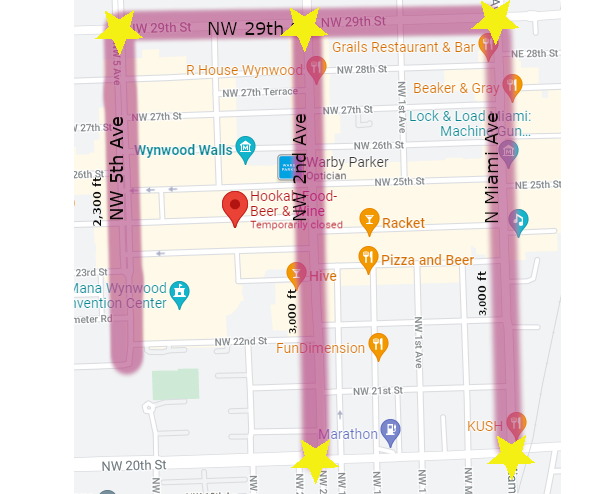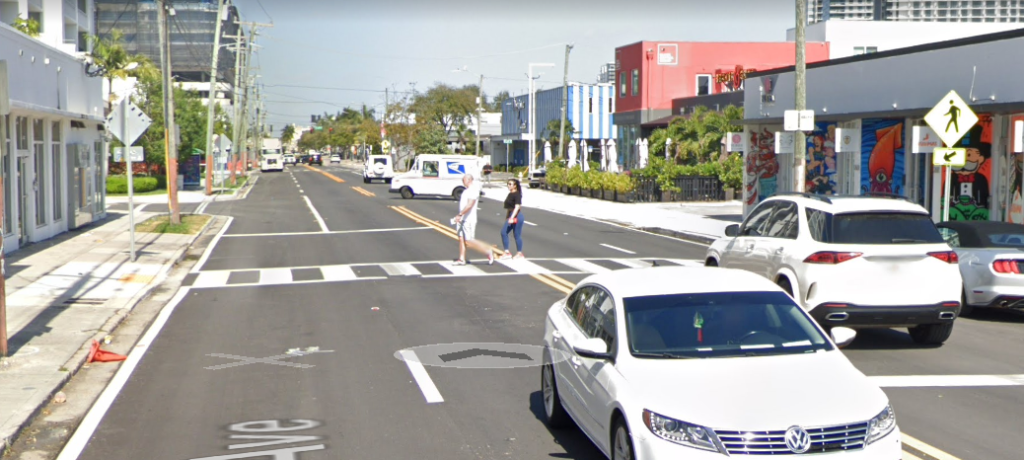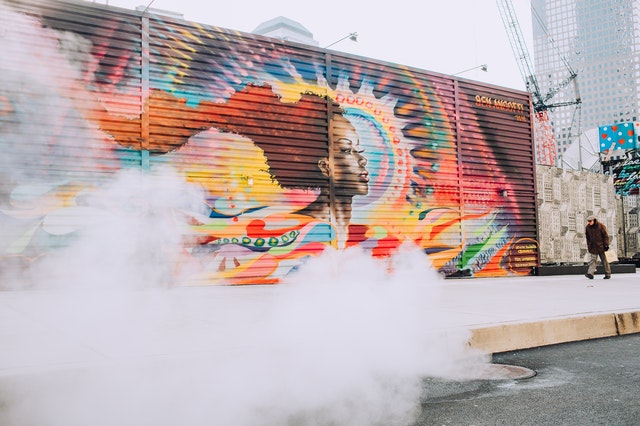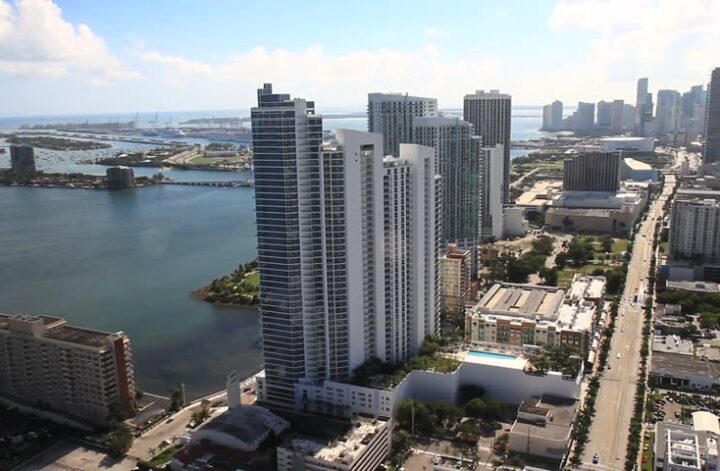Having spent a lot of time in Miami’s Wynwood neighborhood, I’ve noticed its infrastructure hasn’t kept up with private sector investment. New restaurants with famous chefs line the streets, but walking between shops is often unpleasant and frequently dangerous. A friend recently mentioned that she didn’t want to visit the neighborhood while in town because, and I quote, “It’s not a nice place to walk.”
Yes, the sidewalks are narrow. Yes, there are ugly utility poles everywhere. Yes, there’s a general lack of tree canopy. But the biggest issue that impedes walkability and creates safety issues are the long stretches of roadway without traffic control devices that divide the neighborhood and act as border vacuums. Uninterrupted traffic flow is great for highways, but not so great when trying to create a world-class neighborhood that people want to spend time in outside of a vehicle. Arquitectonica GEO addressed some of these issues in their Wynood Streetscape Plan, but practical, short-term measures can be taken right now which don’t involve multi-year streetscape projects.

N. Miami Ave., NW 2nd Ave. and NW 5th Ave. are the primary culprits. NW 5th spans 2,300 ft. without a stop sign or signal. NW 2nd Ave. (the de facto Main Street of Wynwood) spans 3,000 ft., as does N. Miami Ave. These are very long distances without any type of stop control, especially in an area with increasing pedestrian traffic. It’s a problem because long contiguous blocks without traffic control devices increase the likelihood of speeding and reduce safe pedestrian crossing opportunities. NW 29th St. doesn’t have quite the expanse between signals, but it also acts as a border vacuum due to its width and high traffic volumes.
N. Miami Ave. (a 4 lane with peak hour parking strictions) does have several uncontrolled crosswalks in Wynwood, but pedestrians often wait several minutes for traffic to stop, or they make a dare-devil move and jump in the crosswalk and hope traffic yields. Since N. Miami Ave. is a 4 lane, there’s also the risk of multiple-threat crashes at crosswalk locations, as oncoming traffic may not see pedestrians in the crosswalk due to already-stopped vehicles in the other lane. NW 2nd Ave. has several uncontrolled crosswalks, too, but because it’s so packed with vehicles during evening hours and weekends, even crossing its 2 lanes of traffic is a struggle. Pedestrians are seen crossing mid-block on all 3 streets wherever they can find a gap in traffic since safe crossing opportunities are so rare in the neighborhood.
Yellow pedestrian warning signs are scatted throughout the neighborhood, but they’re mostly just feel-good half measures which drivers ignore. When walking on these streets, it seems the priority is to move traffic as quickly as possible between Midtown to Downtown. In a dense urban neighborhood, this should be the last priority.

Making Wynwood’s major streets more permeable with traffic control devices would be a quick win for walkability and traffic safety. Given the amount of new development in Wynwood and increasing traffic volumes, I’d say there are at least 2 intersections on each of the north-south streets which would meet warrants for stop signs, and most likely 1 intersection on each street that would meet warrants for a full traffic signal. The intersections on 25th St. would be a natural starting point, as it bisects the neighborhood and is in the middle of some major development projects. 23rd St. looks like a good 2nd priority, and then 27th St. On N. Miami Ave., I’d recommend replacing some of the uncontrolled mid-block pedestrian crossings with HAWK signals, which are shown to reduce total crashes and pedestrian crashes.

These 3 north-south corridors should act as local streets, not as collectors. I-95 and Bicyayne Blvd. parallel the neighborhood and can accommodate more than enough through traffic. Long term, road diets on N. Miami Ave., NW 5th Ave. and NW 29th St. could allocate more space to sidewalks or bike lanes, helping to reconnect the neighborhood even more. But even without roadway redesigns, a combination of new 4 way stops and signals could make the area 100% more walkable in less than a year while helping to reduce auto crashes as well. These are basic, common sense neighborhood upgrades. It’s time Wynwood’s infrastructure catches up to its posh new restaurants.
Resources
NACTO guidance on crosswalks: https://nacto.org/publication/urban-street-design-guide/intersection-design-elements/crosswalks-and-crossings/
Multiple-Threat Crash webinar: https://www.pedbikeinfo.org/pdf/Webinar_PBIC_080918.pdf




